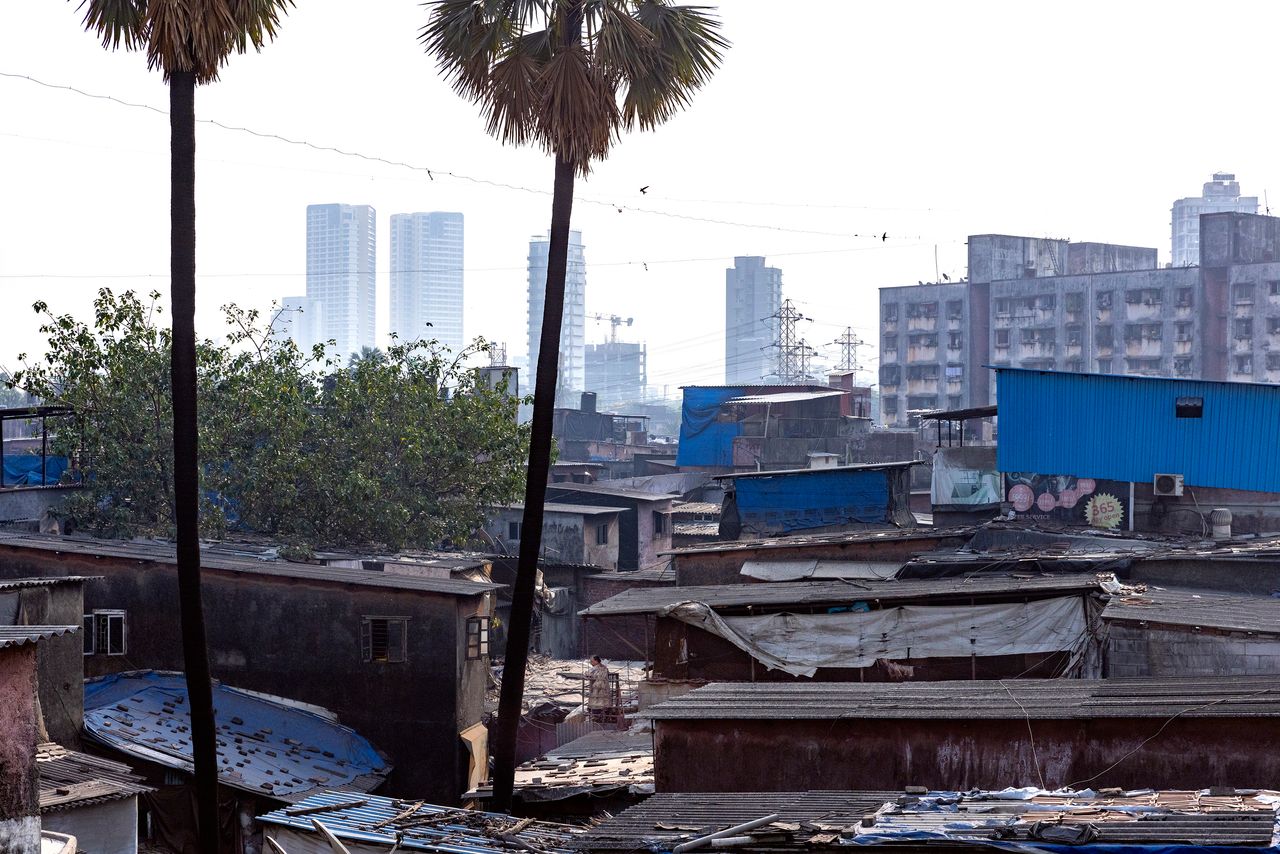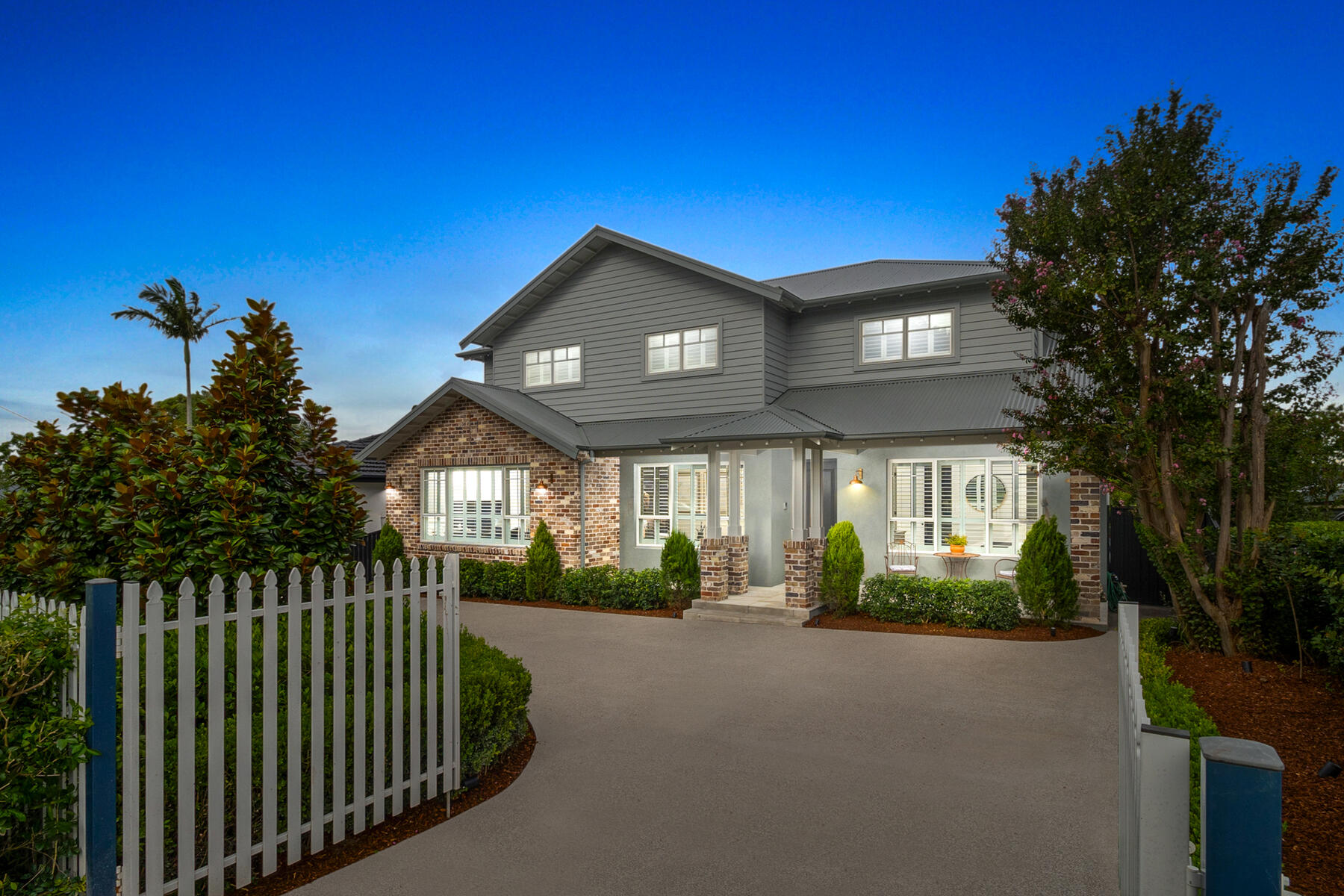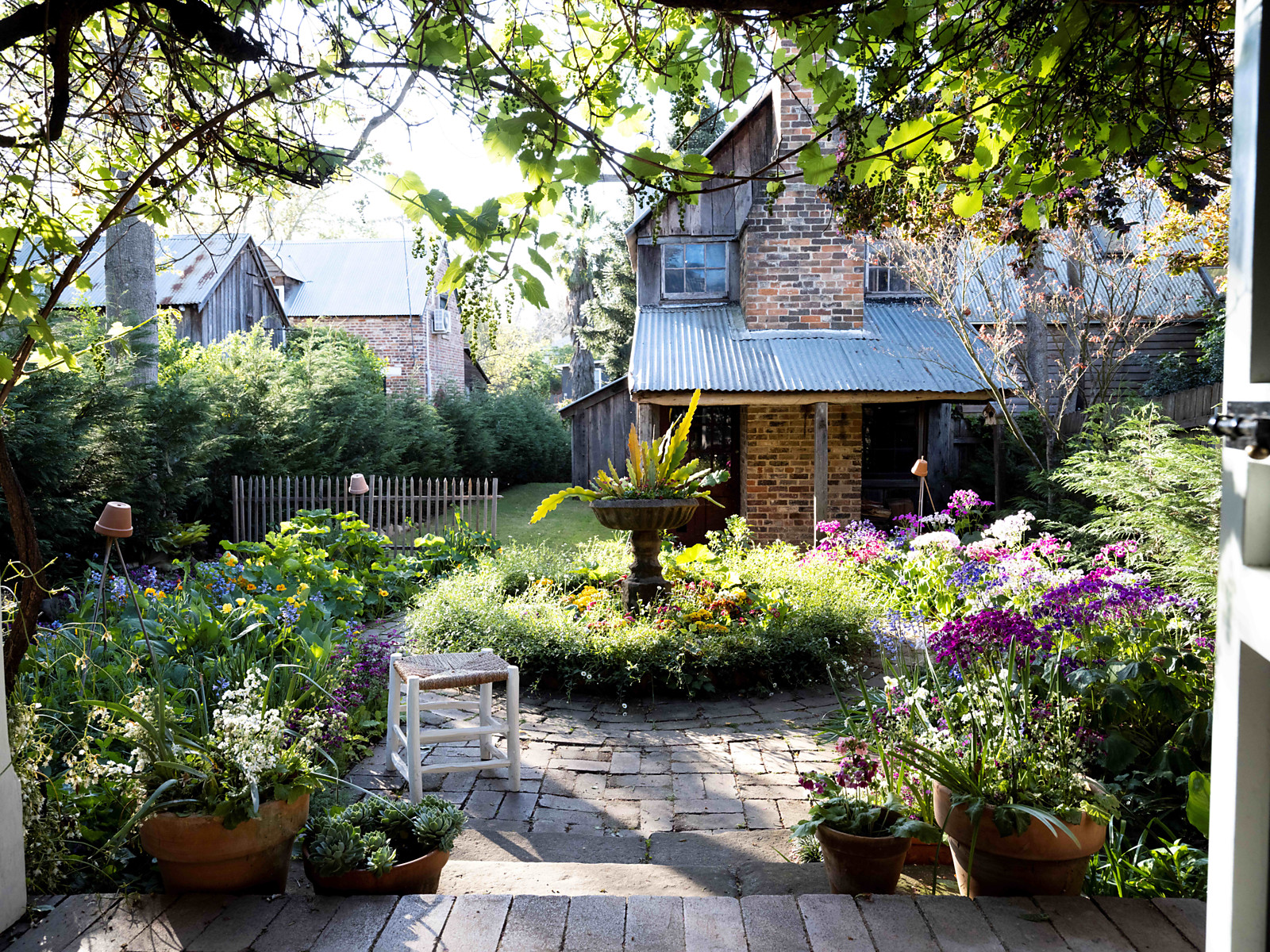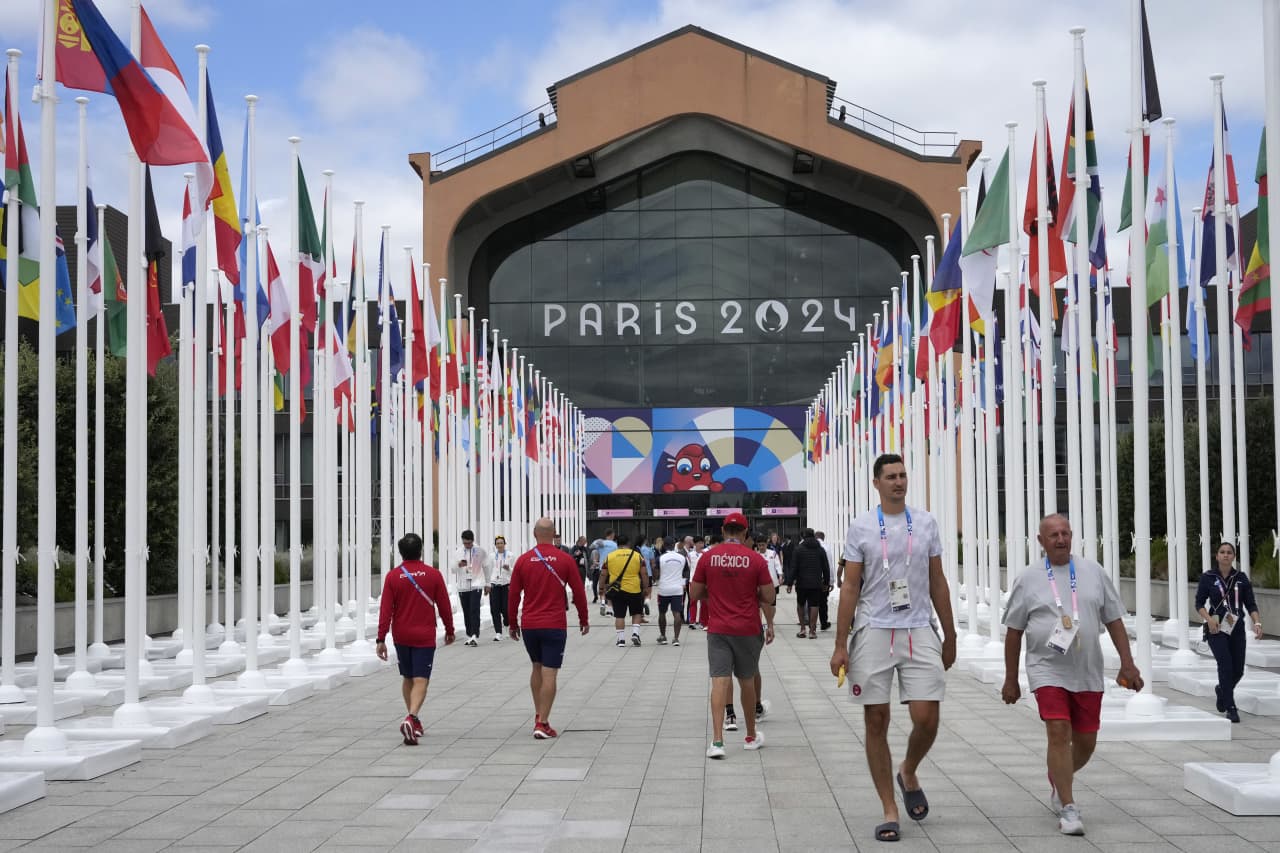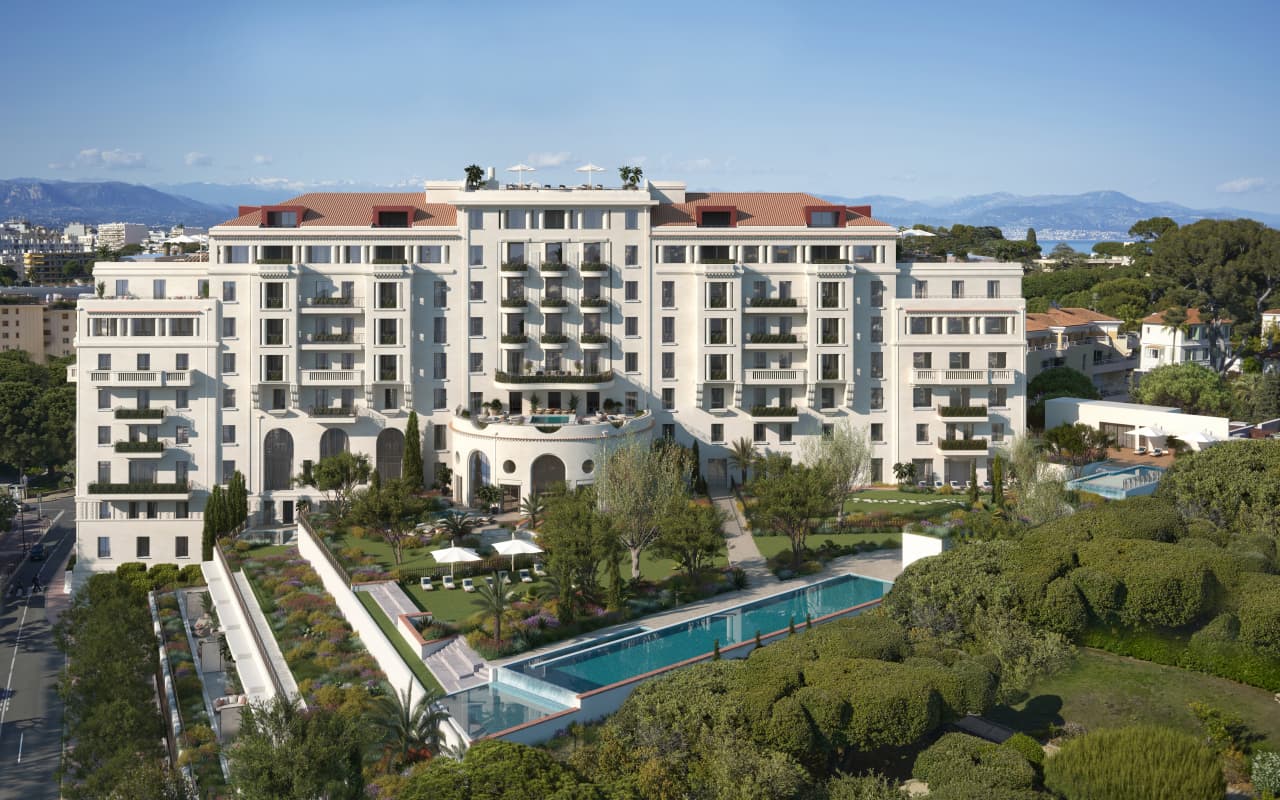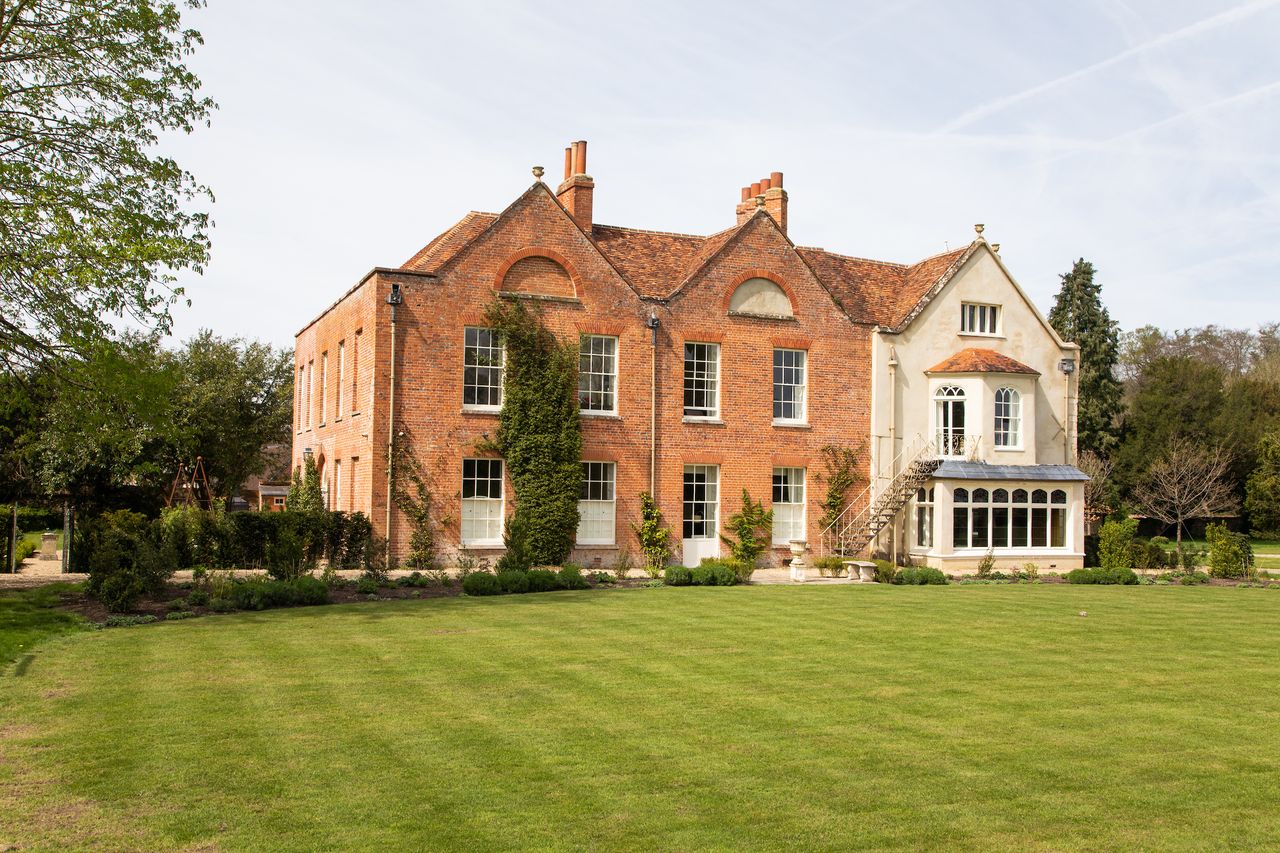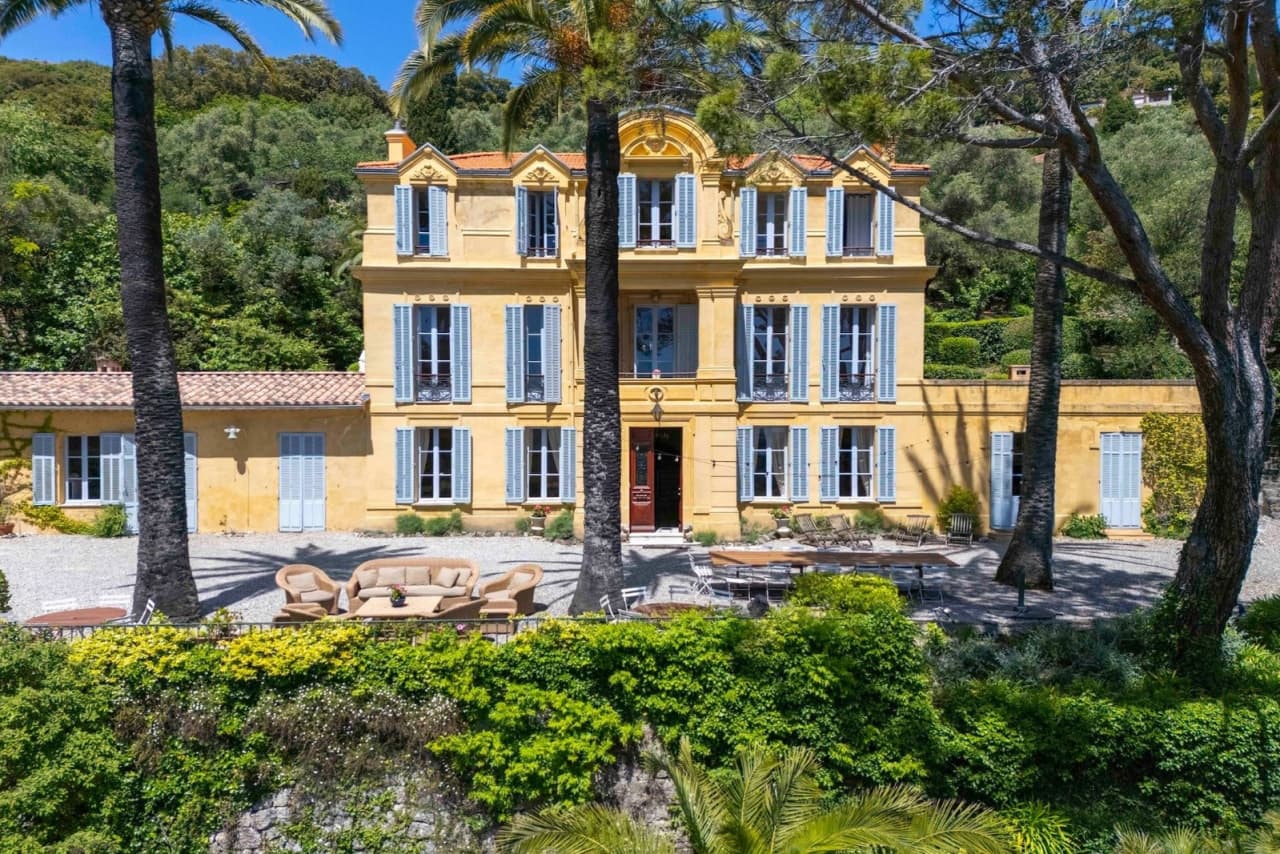India’s Gautam Adani Wants to Redevelop Giant Slum From ‘Slumdog Millionaire’
Billionaire’s Adani Properties is expected to get contract to replace narrow streets and shanties of Dharavi in centre of Mumbai
MUMBAI—Billionaire Gautam Adani has become India’s largest airport operator. He runs coal mines and the country’s largest private port. Now he has set his sights on a massive redevelopment of India’s most iconic slum.
Dharavi, a slum in the centre of Mumbai, gained international fame after being featured in the 2008 Oscar-winning film “Slumdog Millionaire.” It was well known to many Indians long before that, and the city of Mumbai has had plans to replace its shanties with gleaming high-rises for nearly 20 years.
The complexities of relocating the estimated one million people who live and work in an area about two-thirds the size of New York’s Central Park have so far thwarted those efforts. Dharavi is a city within a city. Redeveloping it in the middle of Mumbai will be akin to razing a section of Manhattan—but a far more densely packed version.
The developer will need to house all of those people during construction. Businesses will be disrupted. There will be disagreements about compensation. Protests are expected. Costs will mount.

Thousands of people who live on rent in Dharavi fear that once high-rises come up, the rents will rise sharply, forcing them to move out. “They will remove the poor, not the poverty,” said Mohammed Giasuddin Riaz Ansari, a 46-year-old who has lived in Dharavi for more than 20 years.
Mr. Ansari shares a 300-square-foot rented room with 14 men of his extended family, and makes a living selling toys and balloons in the lanes of Dharavi. He said he manages to save $25 to $35 a month to send to his wife and five children who live in a village in Bihar, one of India’s poorest states. If he has to relocate, he said he would have to build his clientele from scratch. “For anyone with a business, this is not good,” he said.
Mr. Adani, who runs a business empire ranging from infrastructure to energy, has had his hands full lately with a dispute of an entirely different nature. His conglomerate, Adani Group, has come under tremendous market pressure since U.S. short seller Hindenburg Research alleged stock price manipulation in its listed companies. The Adani Group has disputed the allegations, but seven listed Adani companies have lost more than $100 billion in stock market capitalisation since the report came out. Adani and his family members said they have prepaid nearly $2 billion of loans since February.
Some of those wary of the redevelopment have questioned whether the financial pressure on Mr. Adani will strain his ability to finish such a massive project. “How will he do it? Who will give him the money?” said Raju Korde, an activist who has in the past protested against Dharavi redevelopment plans.
Mr. Korde said those who live in the slum worry that if Mr. Adani runs out of money and the project drags on for years, many in the slum will get fed up and leave, something that has happened in other redevelopment projects. “There are thousands of people in Mumbai who have given up their rights,” said Mr. Korde. If need be, those who live in Dharavi will protest, he said.
City officials aren’t concerned about Mr. Adani’s ability to finance the project, said S.V.R. Srinivas, metropolitan commissioner of the Mumbai Metropolitan Region Development Authority, a government body in charge of infrastructure development. The city estimates the redevelopment project could end up costing more than 200 billion rupees, equivalent to $2.4 billion.
Adani Properties Pvt., a unit of Adani Group, made the highest bid for an initial investment of about $615 million for the redevelopment, and the government is expected to formally award the contract to the company soon, Mr. Srinivas said. The developer would be responsible for any additional costs required to complete the project.
“It will be a first huge step toward slum-free Mumbai,” Mr. Srinivas said. The government has been trying to find a developer who would take on the work since 2004 but hasn’t been able to find them because of the complexity of the project, he said.
Slums such as Dharavi have flourished in large cities of many developing countries, where people come from rural areas to look for work but don’t find affordable housing. More than one billion people live in slums worldwide; in India, they make up half of the urban population, according to the World Bank.
Homes in Dharavi are so densely packed that they are separated by winding lanes barely 3 feet wide in many places. On a recent afternoon, children played in the lanes, rats scurried along the sides, and women sat on the doorsteps of windowless homes.

A typical home in Dharavi is just a room, about 10 feet by 12 square feet, with anywhere from two to five residents. They rely on public toilets, with 50 to 60 people on average per toilet, according to some estimates. Some homes are made of corrugated metal sheets and tarpaulin, but many residents have invested to build concrete walls and roofs. As families have grown, they have built rooms on top of existing ones, using scrap materials, wood and plastic.
The redevelopment plan requires that the builder make new homes, with more space and private toilets, and give them free to those who meet the government’s eligibility criteria, which includes, among other things, that they must have been living in a Dharavi home that existed before Jan. 1, 2000. In addition, Dharavi will get wider roads and be hooked up to utilities such as water, gas and a sewage system, according to the government’s tender.
In return, the developer gets the right to build residential and commercial buildings on prime real estate. Next door to Dharavi is the Bandra-Kurla complex, one of India’s most expensive office markets, where the U.S. Consulate is located and global banks such as Standard Chartered PLC and BNP Paribas SA have offices.
The new homes for those who live in Dharavi must be ready within seven years under the government’s plan, while the developer has 18 years to build the commercial and residential property that will be sold on the open market, said Mr. Srinivas.
Local real-estate experts say these timelines are ambitious. “It is not going to be a cakewalk that they will start and everything is…smooth,” said Pankaj Kapoor, founder of Liases Foras Real Estate Rating and Research Pvt in Mumbai. “There would be agitations, there would be resolutions, and then it will take its own prolonged time.”
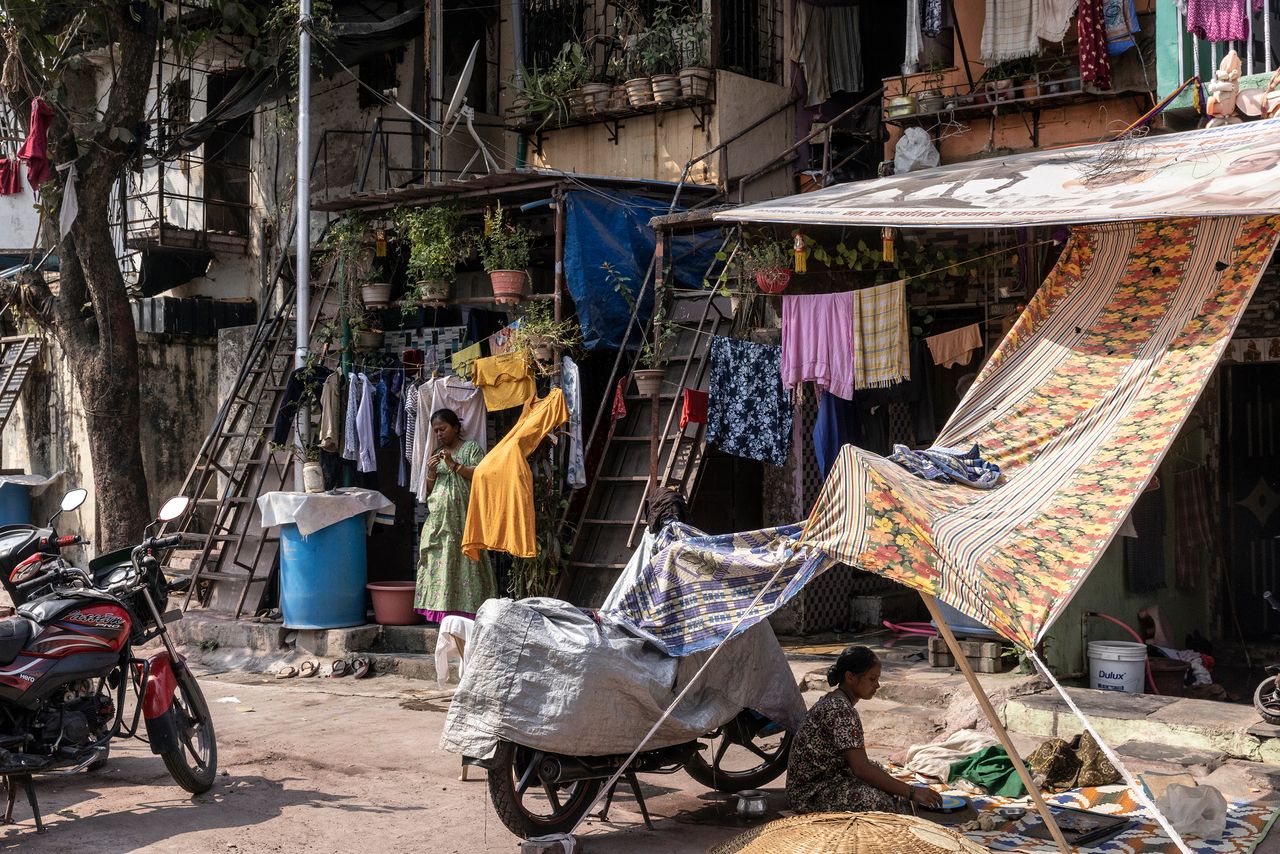
Beyond the complexities of compensating and housing Dharavi’s people, the project is also facing legal challenges. In 2019, a consortium led by a Dubai-based company, Seclink Technologies Corp., won a bidding process for Dharavi’s redevelopment. The government later canceled that tender, saying there had been a material change in the circumstances of the plan. The government put out a new tender last year. Seclink has filed a petition in the Bombay High Court challenging the cancellation of the tender awarded to it.
Last month, several opposition party leaders alleged, in a letter to a federal law-enforcement agency, that awarding the project to Adani Properties is an example of how companies owned by the Indian billionaire have “exercised improper influence to obtain concessions and contracts from governments.”
A spokesman for Adani Group said that Adani Properties won the right to redevelop Dharavi through an open and transparent bidding process.
Some longtime residents welcome the redevelopment plan, hoping it will lead to a cleaner, safer Dharavi. “If it is improved, how nice it will be,” said Rekha Deepak Gade, a 41-year-old single mother who lives with four children in a 100-square-foot room.
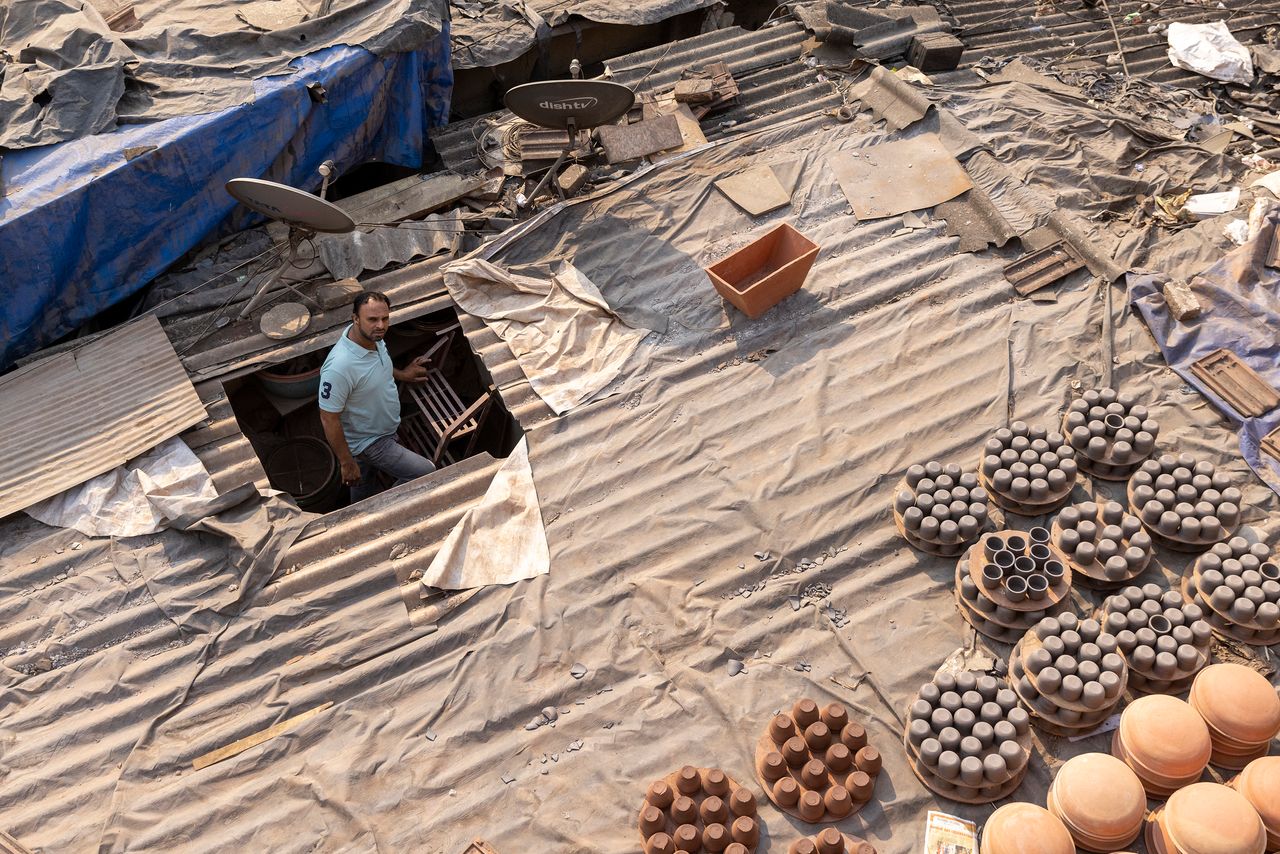
But many are worried about what the project portends for their future.
Malliga Gunashekaran, 47, who moved in 2008 to her current home in Dharavi, where she lives with her husband, son and mother-in-law, said she isn’t sure if they meet the eligibility criteria to get a free home. “There is tension,” she said.
Yusuf Galwani runs a family business with his two brothers in Dharavi, where they make earthenware by hand. His grandfather started out as a clay potter in Dharavi more than 100 years ago. He and his brothers have expanded the workshop in the space-starved slum by building one floor on top of another. They have built a kiln to fire the pottery on the fourth floor. They fear they may not get this much space in a redevelopment.
Mr. Galwani said that over the years he and his brothers have refused lucrative job offers, to continue their family craft. They want to expand their grandfather’s business to greater heights and can’t imagine doing it anywhere else, he said.
“We don’t want to leave Dharavi,” he said. “Our hearts won’t allow it.”
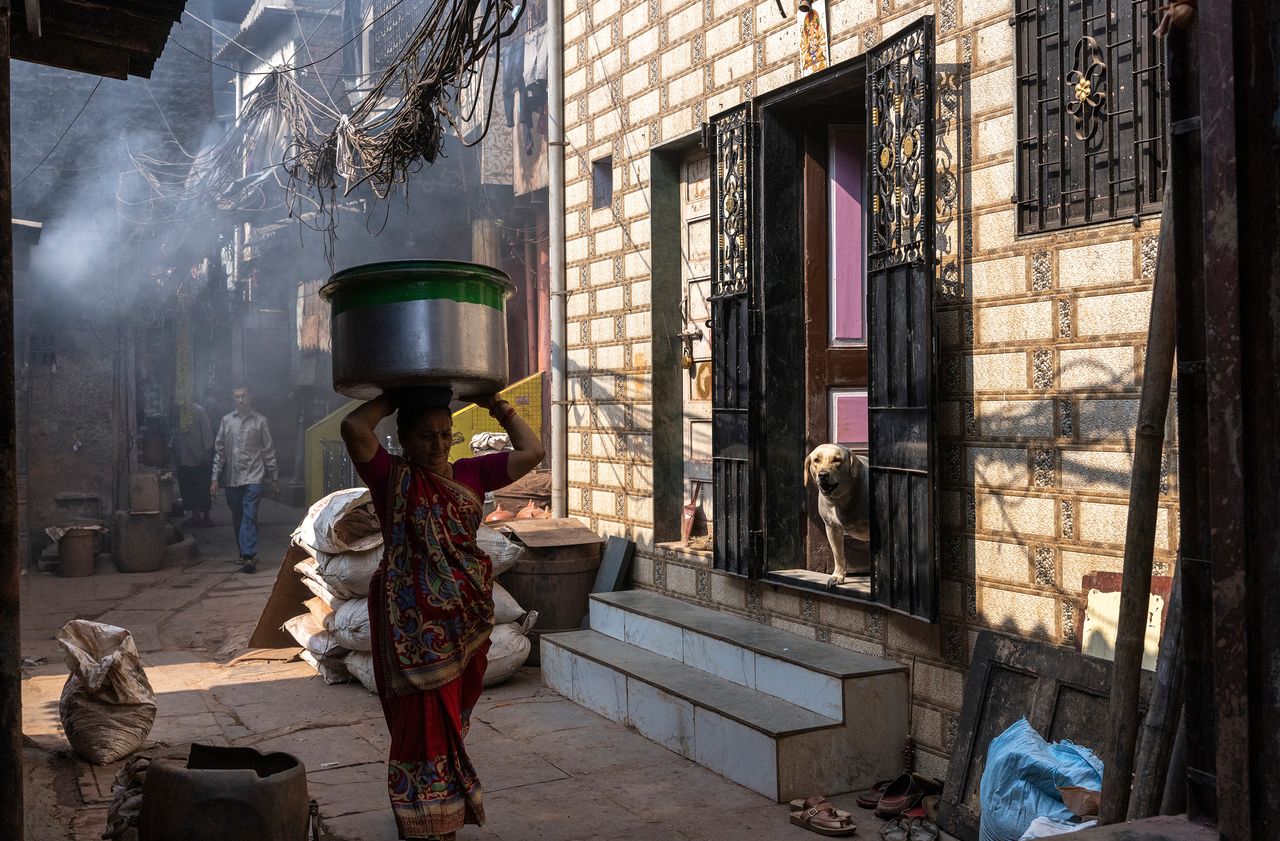
 Copyright 2020, Dow Jones & Company, Inc. All Rights Reserved Worldwide. LEARN MORE
Copyright 2020, Dow Jones & Company, Inc. All Rights Reserved Worldwide. LEARN MORE
This stylish family home combines a classic palette and finishes with a flexible floorplan
Just 55 minutes from Sydney, make this your creative getaway located in the majestic Hawkesbury region.
Ahead of the Games, a breakdown of the city’s most desirable places to live
PARIS —Paris has long been a byword for luxurious living. The traditional components of the upscale home, from parquet floors to elaborate moldings, have their origins here. Yet settling down in just the right address in this low-rise, high-density city may be the greatest luxury of all.
Tradition reigns supreme in Paris real estate, where certain conditions seem set in stone—the western half of the city, on either side of the Seine, has long been more expensive than the east. But in the fashion world’s capital, parts of the housing market are also subject to shifting fads. In the trendy, hilly northeast, a roving cool factor can send prices in this year’s hip neighborhood rising, while last year’s might seem like a sudden bargain.
This week, with the opening of the Olympic Games and the eyes of the world turned toward Paris, The Wall Street Journal looks at the most expensive and desirable areas in the City of Light.
The Most Expensive Arrondissement: the 6th
Known for historic architecture, elegant apartment houses and bohemian street cred, the 6th Arrondissement is Paris’s answer to Manhattan’s West Village. Like its New York counterpart, the 6th’s starving-artist days are long behind it. But the charm that first wooed notable residents like Gertrude Stein and Jean-Paul Sartre is still largely intact, attracting high-minded tourists and deep-pocketed homeowners who can afford its once-edgy, now serene atmosphere.
Le Breton George V Notaires, a Paris notary with an international clientele, says the 6th consistently holds the title of most expensive arrondissement among Paris’s 20 administrative districts, and 2023 was no exception. Last year, average home prices reached $1,428 a square foot—almost 30% higher than the Paris average of $1,100 a square foot.
According to Meilleurs Agents, the Paris real estate appraisal company, the 6th is also home to three of the city’s five most expensive streets. Rue de Furstemberg, a secluded loop between Boulevard Saint-Germain and the Seine, comes in on top, with average prices of $2,454 a square foot as of March 2024.
For more than two decades, Kyle Branum, a 51-year-old attorney, and Kimberly Branum, a 60-year-old retired CEO, have been regular visitors to Paris, opting for apartment rentals and ultimately an ownership interest in an apartment in the city’s 7th Arrondissement, a sedate Left Bank district known for its discreet atmosphere and plutocratic residents.
“The 7th was the only place we stayed,” says Kimberly, “but we spent most of our time in the 6th.”
In 2022, inspired by the strength of the dollar, the Branums decided to fulfil a longstanding dream of buying in Paris. Working with Paris Property Group, they opted for a 1,465-square-foot, three-bedroom in a building dating to the 17th century on a side street in the 6th Arrondissement. They paid $2.7 million for the unit and then spent just over $1 million on the renovation, working with Franco-American visual artist Monte Laster, who also does interiors.
The couple, who live in Santa Barbara, Calif., plan to spend about three months a year in Paris, hosting children and grandchildren, and cooking after forays to local food markets. Their new kitchen, which includes a French stove from luxury appliance brand Lacanche, is Kimberly’s favourite room, she says.
Another American, investor Ashley Maddox, 49, is also considering relocating.
In 2012, the longtime Paris resident bought a dingy, overstuffed 1,765-square-foot apartment in the 6th and started from scratch. She paid $2.5 million and undertook a gut renovation and building improvements for about $800,000. A centrepiece of the home now is the one-time salon, which was turned into an open-plan kitchen and dining area where Maddox and her three children tend to hang out, American-style. Just outside her door are some of the city’s best-known bakeries and cheesemongers, and she is a short walk from the Jardin du Luxembourg, the Left Bank’s premier green space.
“A lot of the majesty of the city is accessible from here,” she says. “It’s so central, it’s bananas.” Now that two of her children are going away to school, she has listed the four-bedroom apartment with Varenne for $5 million.
The Most Expensive Neighbourhoods: Notre-Dame and Invalides
Garrow Kedigian is moving up in the world of Parisian real estate by heading south of the Seine.
During the pandemic, the Canada-born, New York-based interior designer reassessed his life, he says, and decided “I’m not going to wait any longer to have a pied-à-terre in Paris.”
He originally selected a 1,130-square-foot one-bedroom in the trendy 9th Arrondissement, an up-and-coming Right Bank district just below Montmartre. But he soon realised it was too small for his extended stays, not to mention hosting guests from out of town.
After paying about $1.6 million in 2022 and then investing about $55,000 in new decor, he put the unit up for sale in early 2024 and went house-shopping a second time. He ended up in the Invalides quarter of the 7th Arrondissement in the shadow of one Paris’s signature monuments, the golden-domed Hôtel des Invalides, which dates to the 17th century and is fronted by a grand esplanade.
His new neighbourhood vies for Paris’s most expensive with the Notre-Dame quarter in the 4th Arrondissement, centred on a few islands in the Seine behind its namesake cathedral. According to Le Breton, home prices in the Notre-Dame neighbourhood were $1,818 a square foot in 2023, followed by $1,568 a square foot in Invalides.
After breaking even on his Right Bank one-bedroom, Kedigian paid $2.4 million for his new 1,450-square-foot two-bedroom in a late 19th-century building. It has southern exposures, rounded living-room windows and “gorgeous floors,” he says. Kedigian, who bought the new flat through Junot Fine Properties/Knight Frank, plans to spend up to $435,000 on a renovation that will involve restoring the original 12-foot ceiling height in many of the rooms, as well as rescuing the ceilings’ elaborate stucco detailing. He expects to finish in 2025.
Over in the Notre-Dame neighbourhood, Belles demeures de France/Christie’s recently sold a 2,370-square-foot, four-bedroom home for close to the asking price of about $8.6 million, or about $3,630 a square foot. Listing agent Marie-Hélène Lundgreen says this places the unit near the very top of Paris luxury real estate, where prime homes typically sell between $2,530 and $4,040 a square foot.
The Most Expensive Suburb: Neuilly-sur-Seine
The Boulevard Périphérique, the 22-mile ring road that surrounds Paris and its 20 arrondissements, was once a line in the sand for Parisians, who regarded the French capital’s numerous suburbs as something to drive through on their way to and from vacation. The past few decades have seen waves of gentrification beyond the city’s borders, upgrading humble or industrial districts to the north and east into prime residential areas. And it has turned Neuilly-sur-Seine, just northwest of the city, into a luxury compound of first resort.
In 2023, Neuilly’s average home price of $1,092 a square foot made the leafy, stately community Paris’s most expensive suburb.
Longtime residents, Alain and Michèle Bigio, decided this year is the right time to list their 7,730-square-foot, four-bedroom townhouse on a gated Neuilly street.
The couple, now in their mid 70s, completed the home in 1990, two years after they purchased a small parcel of garden from the owners next door for an undisclosed amount. Having relocated from a white-marble château outside Paris, the couple echoed their previous home by using white- and cream-coloured stone in the new four-story build. The Bigios, who will relocate just back over the border in the 16th Arrondissement, have listed the property with Emile Garcin Propriétés for $14.7 million.
The couple raised two adult children here and undertook upgrades in their empty-nester years—most recently, an indoor pool in the basement and a new elevator.
The cool, pale interiors give way to dark and sardonic images in the former staff’s quarters in the basement where Alain works on his hobby—surreal and satirical paintings, whose risqué content means that his wife prefers they stay downstairs. “I’m not a painter,” he says. “But I paint.”
The Trendiest Arrondissement: the 9th
French interior designer Julie Hamon is theatre royalty. Her grandfather was playwright Jean Anouilh, a giant of 20th-century French literature, and her sister is actress Gwendoline Hamon. The 52-year-old, who divides her time between Paris and the U.K., still remembers when the city’s 9th Arrondissement, where she and her husband bought their 1,885-square-foot duplex in 2017, was a place to have fun rather than put down roots. Now, the 9th is the place to do both.
The 9th, a largely 19th-century district, is Paris at its most urban. But what it lacks in parks and other green spaces, it makes up with nightlife and a bustling street life. Among Paris’s gentrifying districts, which have been transformed since 2000 from near-slums to the brink of luxury, the 9th has emerged as the clear winner. According to Le Breton, average 2023 home prices here were $1,062 a square foot, while its nearest competitors for the cool crown, the 10th and the 11th, have yet to break $1,011 a square foot.
A co-principal in the Bobo Design Studio, Hamon—whose gut renovation includes a dramatic skylight, a home cinema and air conditioning—still seems surprised at how far her arrondissement has come. “The 9th used to be well known for all the theatres, nightclubs and strip clubs,” she says. “But it was never a place where you wanted to live—now it’s the place to be.”
With their youngest child about to go to college, she and her husband, 52-year-old entrepreneur Guillaume Clignet, decided to list their Paris home for $3.45 million and live in London full-time. Propriétés Parisiennes/Sotheby’s is handling the listing, which has just gone into contract after about six months on the market.
The 9th’s music venues were a draw for 44-year-old American musician and piano dealer, Ronen Segev, who divides his time between Miami and a 1,725-square-foot, two-bedroom in the lower reaches of the arrondissement. Aided by Paris Property Group, Segev purchased the apartment at auction during the pandemic, sight unseen, for $1.69 million. He spent $270,000 on a renovation, knocking down a wall to make a larger salon suitable for home concerts.
During the Olympics, Segev is renting out the space for about $22,850 a week to attendees of the Games. Otherwise, he prefers longer-term sublets to visiting musicians for $32,700 a month.
Most Exclusive Address: Avenue Junot
Hidden in the hilly expanses of the 18th Arrondissement lies a legendary street that, for those in the know, is the city’s most exclusive address. Avenue Junot, a bucolic tree-lined lane, is a fairy-tale version of the city, separate from the gritty bustle that surrounds it.
Homes here rarely come up for sale, and, when they do, they tend to be off-market, or sold before they can be listed. Martine Kuperfis—whose Paris-based Junot Group real-estate company is named for the street—says the most expensive units here are penthouses with views over the whole of the city.
In 2021, her agency sold a 3,230-square-foot triplex apartment, with a 1,400-square-foot terrace, for $8.5 million. At about $2,630 a square foot, that is three times the current average price in the whole of the 18th.
Among its current Junot listings is a 1930s 1,220-square-foot townhouse on the avenue’s cobblestone extension, with an asking price of $2.8 million.
This stylish family home combines a classic palette and finishes with a flexible floorplan
Just 55 minutes from Sydney, make this your creative getaway located in the majestic Hawkesbury region.









